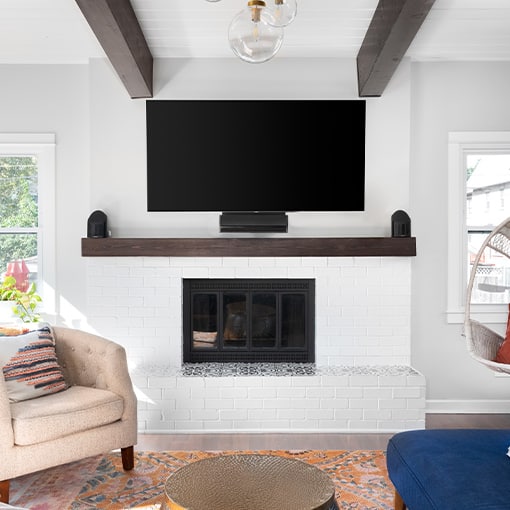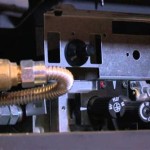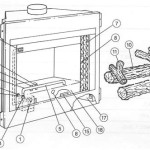TV Wall Mount Above Fireplace Ideas: Balancing Aesthetics and Functionality
Mounting a television above a fireplace has become a popular design choice in many homes. This configuration effectively centralizes entertainment, creating a focal point in a living room or family space. However, the decision to place a TV above a fireplace requires careful consideration of several factors including aesthetics, viewing ergonomics, heat exposure, and installation challenges. This article explores these aspects in detail, providing a comprehensive overview of considerations and ideas for successfully implementing a TV wall mount above a fireplace.
The primary appeal of this setup is space optimization. In smaller rooms, combining the TV and fireplace eliminates the need for separate focal points, freeing up valuable floor space. This arrangement also offers a clean, streamlined look, hiding unsightly cords and cables for a more polished and organized appearance. With proper planning and execution, a TV mounted above a fireplace can enhance the overall visual appeal of a room, creating a cozy and inviting atmosphere.
Despite the aesthetic benefits, there are potential drawbacks that must be addressed. Heat generated by the fireplace can damage electronic components over time, reducing the lifespan of the television. Viewing angle is another crucial consideration. Mounting the TV too high can lead to neck strain and discomfort, particularly during extended viewing sessions. These challenges, however, can be mitigated with careful planning and the implementation of appropriate safety measures.
Addressing Heat Concerns: Protecting Your Television
One of the most significant concerns when mounting a TV above a fireplace is heat exposure. Fireplaces, whether gas, electric, or wood-burning, generate significant heat that rises directly toward the television. Prolonged exposure to high temperatures can damage the internal components of the TV, leading to malfunctions and premature failure. Different types of fireplaces produce varying levels of heat, so assessing the specific fireplace in question is crucial.
Several strategies can be employed to mitigate heat exposure. The first is to install a mantel shelf. A mantel serves as a physical barrier, deflecting heat away from the television. The deeper the mantel, the more effective it will be in protecting the TV. The material of the mantel also matters; stone or brick mantels are better at absorbing and dissipating heat compared to wood or other flammable materials. The height of the mantel should be carefully calculated based on the fireplace's heat output and the television's clearance requirements.
Another option is to install a heat deflector shield. These shields are typically made of metal and are designed to redirect heat away from the TV. They can be mounted above the fireplace opening or directly behind the television. Heat deflector shields can be particularly useful for fireplaces that produce a significant amount of radiant heat or for installations where a mantel is not feasible. Look for deflectors specifically designed for fireplace TV installations, as they will offer optimal protection.
Ensuring proper ventilation is also critical. The space behind the television should be well-ventilated to allow heat to dissipate. Avoid completely enclosing the TV in a tight space, as this can trap heat and exacerbate the problem. Consider using a chimney balloon or fireplace draft stopper when the fireplace is not in use to further prevent heat from rising. These devices can help to minimize heat transfer during both active and inactive periods of fireplace use.
Beyond these physical solutions, consider the type of fireplace itself. Electric fireplaces tend to produce less heat than gas or wood-burning fireplaces, making them a potentially safer option for TV installations. If choosing a gas or wood-burning fireplace, ensure it is properly maintained and vented to minimize heat output. Regular professional inspections can help identify and address any issues that could contribute to excessive heat generation.
Optimizing Viewing Angle: Ergonomics and Comfort
The height at which the television is mounted is a critical factor in ensuring a comfortable viewing experience. Mounting the TV too high can strain the neck muscles, leading to discomfort and potential long-term health issues. The ideal viewing angle is generally considered to be at or slightly below eye level when seated. This allows for a natural and relaxed viewing posture.
To determine the optimal mounting height, consider the typical viewing position and the size of the television. Measure the distance from the floor to the eye level of the viewers when seated in their usual viewing positions. This measurement will serve as a baseline for determining the appropriate TV height. Then, consider the vertical dimensions of the television itself. Ideally, the center of the TV screen should be at or slightly below the eye level measurement.
Adjustable TV mounts provide flexibility in optimizing the viewing angle. Tilting mounts allow the TV to be angled downward, compensating for the higher mounting position above the fireplace. These mounts can be particularly useful for installations where the TV must be mounted higher than ideal due to spatial constraints or aesthetic considerations. Full-motion mounts offer even greater flexibility, allowing the TV to be swiveled and tilted in multiple directions, providing optimal viewing angles from various points in the room.
Before permanently mounting the TV, it is advisable to temporarily position it at different heights to assess the viewing comfort. Use a stand or temporary support to simulate the intended mounting position and have viewers sit in their usual viewing positions. Observe their posture and ask for feedback on their comfort level. This process can help fine-tune the mounting height and ensure a comfortable viewing experience for all members of the household.
If mounting the TV at an optimal height above the fireplace is not feasible, consider alternative solutions such as lowering the seating position. Using lower sofas or chairs can effectively lower the overall viewing angle, making the TV screen more comfortable to watch. Another option is to use a motorized TV mount, which allows the TV to be lowered to a more comfortable viewing height when in use and raised back to its original position when not in use. While these solutions may require additional investment, they can significantly improve the overall viewing experience.
Installation Considerations: Safety and Aesthetics
The installation process requires careful planning and execution to ensure both safety and aesthetics. The structural integrity of the wall is paramount, particularly when mounting a heavy television. Locate wall studs using a stud finder and ensure that the TV mount is securely anchored to the studs. If studs are not ideally positioned, consider using a reinforced mounting plate or a specialized mount designed for uneven stud spacing. If you are unfamiliar with anchoring heavy objects to walls, consult a professional installer.
Cable management is another critical aspect of the installation. Concealing unsightly cords and cables is essential for achieving a clean and polished look. The simplest solution is to run the cables through the wall using a cable management kit. These kits typically include a drill bit, cable pass-through plates, and a fish tape for pulling the cables through the wall. Ensure that the cables are properly insulated and protected to prevent any electrical hazards.
Consider the power source for the television. Ideally, an electrical outlet should be located near the TV mounting position to minimize the need for extension cords. If an outlet is not conveniently located, consider having an electrician install one. Running extension cords across walls or floors can be unsightly and pose a tripping hazard. Recessed outlets, which are flush with the wall surface, can also provide a cleaner look. Ensure all electrical work is performed by a qualified electrician.
Aesthetics play a significant role in the overall success of the installation. Choose a TV mount that complements the style of the room and the fireplace. Low-profile mounts are ideal for minimizing the gap between the TV and the wall, creating a sleek and modern look. Articulating mounts, while more versatile, may protrude further from the wall. Consider the color and finish of the mount to ensure it blends seamlessly with the surrounding décor.
Finally, consider the overall design of the fireplace area. A well-designed fireplace surround can enhance the aesthetic appeal of the entire installation. Adding decorative elements such as shelving, artwork, or plants can create a cohesive and inviting focal point. Pay attention to the symmetry and balance of the design to ensure a visually pleasing result. If unsure about the design aspects, seek advice from an interior designer.

Can I Mount My Tv Above The Fireplace

Safely Mount A Tv Above An Electric Fireplace Touchstone Home S Inc

Putting A Tv Above The Fireplace May Not Be Such Bad Idea After All

Can You Put A Tv Over Fireplace Direct Fireplaces

S And Chaos The Tv Wall Mount Is Done Living Room Over Fireplace Above

Can I Mount My Tv Above The Fireplace

How To Mount A Tv Over Fireplace Vertical Chimney Care

Matching Your Tv Size To Fireplace

Tv Wall Mount Installation With Wire Concealment Over Fireplace

Mounting A Tv Above The Fireplace Mantelmount
Related Posts








